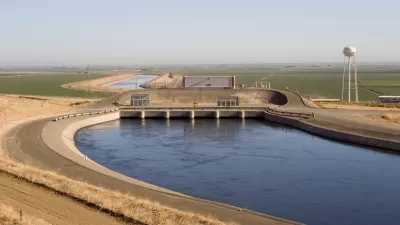Low-tech Magazine details the history of the trolley canal boat, a staple of the past for transporting goods down canals and waterways. Could something like this make a comeback?
The article documents all the different modes of pulling canal boats along, from horses to electrical or steam towing.
From Low-tech Magazine:"Of course, canal barges are much slower than trucks or trains. But, if they could haul cargo for almost nothing, it would still be an economical choice for many goods. This advantage would grow if oil prices would rise. Many abandoned canals could be put in use again, and even new ones could be built.
Almost all methods above were designed for use on very shallow, trapezoidal "low-tech" canals, which were only 2 metres (6.5 feet) deep at the centre, and much less on the sides (see picture below). These are not public works like the Panama Canal which would take decades and require thousands of workers (or energy-guzzling machines) to build. This is something that might even be done on a community level."
FULL STORY: Trolley canal boats

Planetizen Federal Action Tracker
A weekly monitor of how Trump’s orders and actions are impacting planners and planning in America.

Map: Where Senate Republicans Want to Sell Your Public Lands
For public land advocates, the Senate Republicans’ proposal to sell millions of acres of public land in the West is “the biggest fight of their careers.”

Restaurant Patios Were a Pandemic Win — Why Were They so Hard to Keep?
Social distancing requirements and changes in travel patterns prompted cities to pilot new uses for street and sidewalk space. Then it got complicated.

Platform Pilsner: Vancouver Transit Agency Releases... a Beer?
TransLink will receive a portion of every sale of the four-pack.

Toronto Weighs Cheaper Transit, Parking Hikes for Major Events
Special event rates would take effect during large festivals, sports games and concerts to ‘discourage driving, manage congestion and free up space for transit.”

Berlin to Consider Car-Free Zone Larger Than Manhattan
The area bound by the 22-mile Ringbahn would still allow 12 uses of a private automobile per year per person, and several other exemptions.
Urban Design for Planners 1: Software Tools
This six-course series explores essential urban design concepts using open source software and equips planners with the tools they need to participate fully in the urban design process.
Planning for Universal Design
Learn the tools for implementing Universal Design in planning regulations.
Heyer Gruel & Associates PA
JM Goldson LLC
Custer County Colorado
City of Camden Redevelopment Agency
City of Astoria
Transportation Research & Education Center (TREC) at Portland State University
Camden Redevelopment Agency
City of Claremont
Municipality of Princeton (NJ)




























